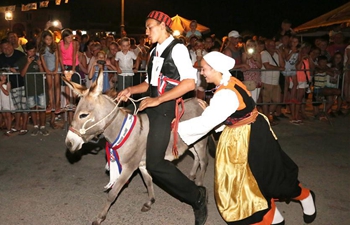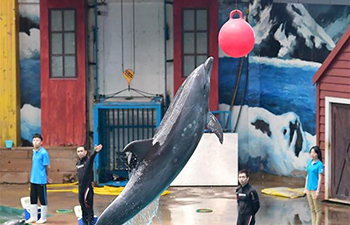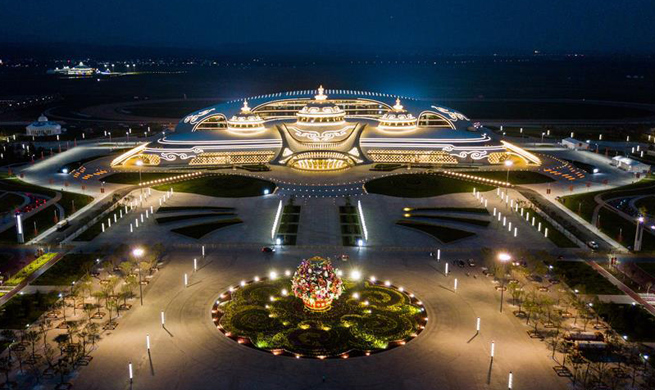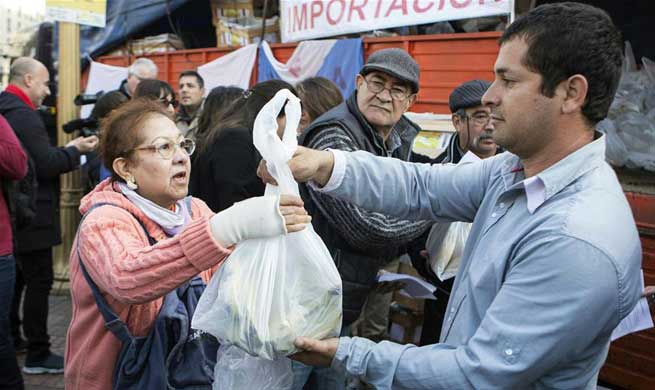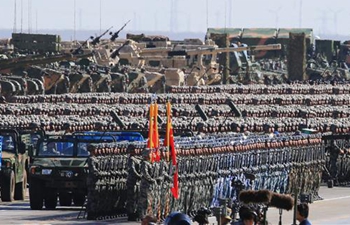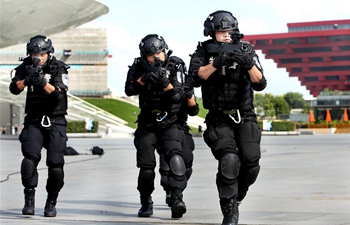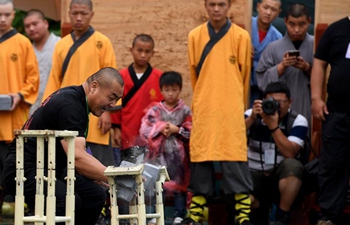WASHINGTON, Aug. 2 (Xinhua) -- By the end of this century, summer heat waves could exceed the upper limit of human survivability at "a few locations" in South Asia, a region of deep poverty where one-fifth of the world's people live, a new study said Wednesday.
The most affected regions would be the Chota Nagpur Plateau, northeastern India, and Bangladesh, according to the study published by the U.S. journal Science Advances.
"Our findings have significant implications to the ongoing considerations regarding climate change policy," said the study, which is based on detailed computer simulations using the best available global circulation models.
The new findings were conducted by Professor Elfatih Eltahir of the Massachusetts Institute of Technology, Assistant Professor Eun Soon Im of the Hong Kong University of Science and Technology and Professor Jeremy Pal at Loyola Marymount University in Los Angeles.
Scientists have known that hot weather's most deadly effects for humans come from a combination of high temperature and high humidity, an index which is measured by a reading known as wet-bulb temperature.
The wet-bulb temperature reflects the ability of moisture to evaporate, which is the mechanism required for the human body to maintain its internal temperature through the evaporation of sweat.
At a wet-bulb temperature of 35 degrees Celsius, the human body cannot cool itself enough to survive more than a few hours.
A previous study found that the wet-bulb temperature has rarely exceeded about 31 degrees Celsius anywhere on Earth in the past decades.
However, when it does happen, "the most detrimental human impacts of climate change on heat waves could potentially be those in developing nations because of the vulnerability of their populations," the study said.
In much of India and Pakistan, an apparent rising trend in the frequency of deadly heat waves has been observed, it said.
For example, the fifth deadliest heat wave in recorded history affected large parts of India and Pakistan, claiming around 3,500 lives in 2015.
The new study showed that by century's end, absent serious reductions in global emissions, wet-bulb temperatures are projected to approach the threshold of survivability over most of South Asia, including the Ganges river valley, northeastern India, Bangladesh, the eastern coast of India, Chota Nagpur Plateau, northern Sri Lanka, and the Indus valley of Pakistan.
And the temperatures could exceed the upper limit at a few locations in the Chota Nagpur Plateau, northeastern India, and Bangladesh.
In today's climate, about 2 percent of the Indian population sometimes gets exposed to extremes of 32-degree wet-bulb temperatures.
According to this study, by 2100 that will increase to about 70 percent of the population, and about two percent of the people will sometimes be exposed to the survivability limit of 35 degrees.
And because the region is important agriculturally, it's not just those directly affected by the heat who will suffer, Eltahir said.
"With the disruption to the agricultural production, it doesn't need to be the heat wave itself that kills people. Production will go down, so potentially everyone will suffer," he said.
However, under a moderate mitigation scenario, which is roughly comparable to the goals pledged by the 2015 UN Conference on Climate Change in Paris, these dramatic, deadly effects can largely be averted, the researchers noted.
"With mitigation, we hope we will be able to avoid these severe projections. This is not something that is unavoidable," Eltahir said.





